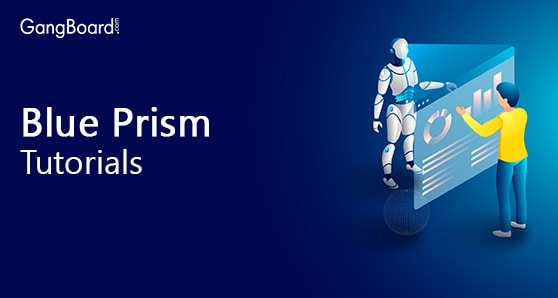
Blue Prism Tutorials
Blue Prism Tutorials for Beginners
Robotic Process Automation with Blue Prism
Accomplishing more with programming is the embodiment of advanced change. An imperative piece of this change is mechanizing business processes, utilizing programming as opposed to individuals wherever conceivable. Robotic process automation (RPA) is an inexorably famous way to deal with doing this.
RPA can transformatively distress relations, bringing lower costs, expanded unwavering quality, and quicker process execution. Done well, it can likewise give IT and business a chance to individuals cooperate to actualize and change robotized processes rapidly. This paper grants RPA, at that point represents how it’s given by Blue Prism, the main seller in this market. The objective is to explain what RPA is and how Blue Prism bolsters it.
What is Robotic Process Automation?
Indeed, even in our computerized time, numerous business processes are still done by individuals. However, these processes regularly depend on at least one applications, with people giving the driving knowledge. For instance, study a back office that holders client orders. Each request may require getting a client’s name, at that point gazing upward and approving the client’s transportation address. When this data is accessible, the subsequent stages may be to figure the transportation cost and put in the request. In a run of the mill back office condition, individuals execute this process, frequently depending on various applications to finish it.
In any case, why? Similarly as increasingly fabricating processes are presently done by robots, for what reason can’t increase more business processes be finished by programming robots? The appropriate reply is that with RPA, they can. Put essentially, RPA implies utilizing programming as opposed to individuals to do business processes that depend on applications. Figure 1 shows this thought.
Figure 1: Robotic process automation tolerates using software robots slightly than people to drive corporate processes.
As the figure appears, RPA permits supplanting individuals with programming robots. While this sort of automation can be helpful when a process utilizes only one application, it’s particularly profitable when a process depends on numerous applications, as in the precedent appeared. Instead of coordinating the applications through whatever application programming interfaces (APIs) they may uncover, RPA rather gets to every one through its UI, similarly as an individual would.
For the correct sorts of processes, the financial aspects of a robotic workforce are engaging. Actually, RPA can now and again bring tremendous advantages, particularly for vast ventures. Consider it: Software robots can work each day nonstop, and they aren’t enticed to take alternate routes. In the event that your remaining task at hand expands, you don’t need to contract, train, and send new individuals; you simply run more robots. On the off chance that your outstanding task at hand diminishes, you don’t have to lay anyone off; you simply closed down a few robots.
Blue Prism, a UK-based innovation organization, gives programming to RPA. (Actually, they begat this now in an industry-standard term.) This paper portrays Blue Prism’s putting forth, which is likewise called Blue Prism. Prior to jumping into the innovation, however, it merits investigating why associations use RPA.
The Value of Robotic Process Automation
Computerizing processes utilizing RPA has a great deal letting it all out. Among its attractions are the accompanying:
Computerizing a process utilizing RPA is regularly less complex than utilizing API-based incorporation. It additionally requires less specialized information and should be possible quicker.
Robotizing a process utilizing RPA is generally more affordable than utilizing API-based automation. Along these lines, you can mechanize more business processes for less cash. And keeping in mind that API-based automation is regularly utilized just for high-esteem processes, RPA can give an arrival on speculation notwithstanding for processes with lower business esteem. For instance, perhaps an application’s exchange volumes don’t legitimize the exertion and cost of API-based automation. Utilizing a lower-cost RPA approach can make this automation feasible.
When an organized improvement process is set up, RPA can give business a chance to individuals make their own product robots. This liberates the business from aggregate dependence on IT for process automation. Similarly as vital, RPA can give business a chance to individuals change their robotized business processes without rolling out each improvement ask for experience the IT bottleneck.
Programming robots make processes increasingly precise. In contrast to individuals, they don’t get worn out and commit errors. They simply execute the characterized process correctly again and again and over. RPA can likewise enhance information quality, since info mistakes made by individuals leave.
Applications got to by means of RPA needn’t uncover any APIs. Rather, programming robots depend on a similar UIs that individuals use. This additionally brings down the danger of computerizing a process, since associating with applications through APIs can give more straightforward—and possibly all the more harming—access to their usefulness.
In numerous applications, including current web applications and more seasoned customer/server arrangements, imperative parts of the business rationale are actualized in the UI. On the web, for instance, information approval is often done in JavaScript running in the program. RPA exploits this, something that is more enthusiastically to do with API-based process automation.
RPA permits naturally logging what might some way or another be manual activities in a business process. These logs are then accessible for review, giving a composed record of the process. This can be helpful for things, for example, deciding why a process raised a special case and meeting administrative prerequisites.
As this rundown proposes, RPA is regularly a decent decision for robotizing business processes. It’s important, however, that API-based automation can here and there yield better execution. For instance, assume the data required for a solitary activity is spread over a few diverse pages or screens. While API-based automation may have the capacity to get to that data in a single lump, utilizing RPA may mean venturing through the majority of the required pages or screens (in spite of the fact that RPA innovations can likewise possibly get to these APIs).
Like each innovation, RPA has UPS
As the figure appears, RPA permits supplanting individuals with programming robots. While this sort of automation can be helpful when a process utilizes only one application, it’s particularly profitable when a process depends on numerous applications, as in the precedent appeared. Instead of coordinating the applications through whatever application programming interfaces (APIs) they may uncover, RPA rather gets to every one through its UI, similarly as an individual would.
For the correct sorts of processes, the financial aspects of a robotic workforce are engaging. Actually, RPA can now and again bring tremendous advantages, particularly for vast ventures. Consider it: Software robots can work each day nonstop, and they aren’t enticed to take alternate routes. In the event that your remaining task at hand expands, you don’t need to contract, train, and send new individuals; you simply run more robots. On the off chance that your outstanding task at hand diminishes, you don’t have to lay anyone off; you simply closed down a few robots.
Blue Prism, a UK-based innovation organization, gives programming to RPA. (Actually, they begat this now industry-standard term.) This paper portrays Blue Prism’s putting forth, which is likewise called Blue Prism. Prior to jumping into the innovation, however, it merits investigating why associations use RPA.
Getting an answer running rapidly and reasonably is imperative.
The business process doesn’t have to deal with amazingly high exchange volumes.
The business process changes much of the time, and specialists should have the capacity to roll out those improvements themselves.
The business benefit of mechanizing a process isn’t sufficiently high to legitimize the venture required for API-based coordination.
For instance, consider robotizing a business process that traverses a scope of various applications from various times, including as of late fabricated web applications, customer/server programming, and 25-year-old centralized server programming. On the off chance that the objective is to make a mechanized process that handles countless exchanges multi day, if the process doesn’t change regularly, if these applications uncover the correct APIs, and if the time and cash are accessible, API-based process automation is most likely the best decision. However, on the off chance that the computerized process is required rapidly at lower cost, on the off chance that it may change often, in the event that it require handle just a couple of thousand exchanges every day, or if the correct APIs aren’t accessible, utilizing RPA is most likely a superior methodology.
An Overview of Blue Prism
Blue Prism is a lot of apparatuses, libraries, and runtime situations for RPA. Figure 2 represents the item’s fundamental parts.
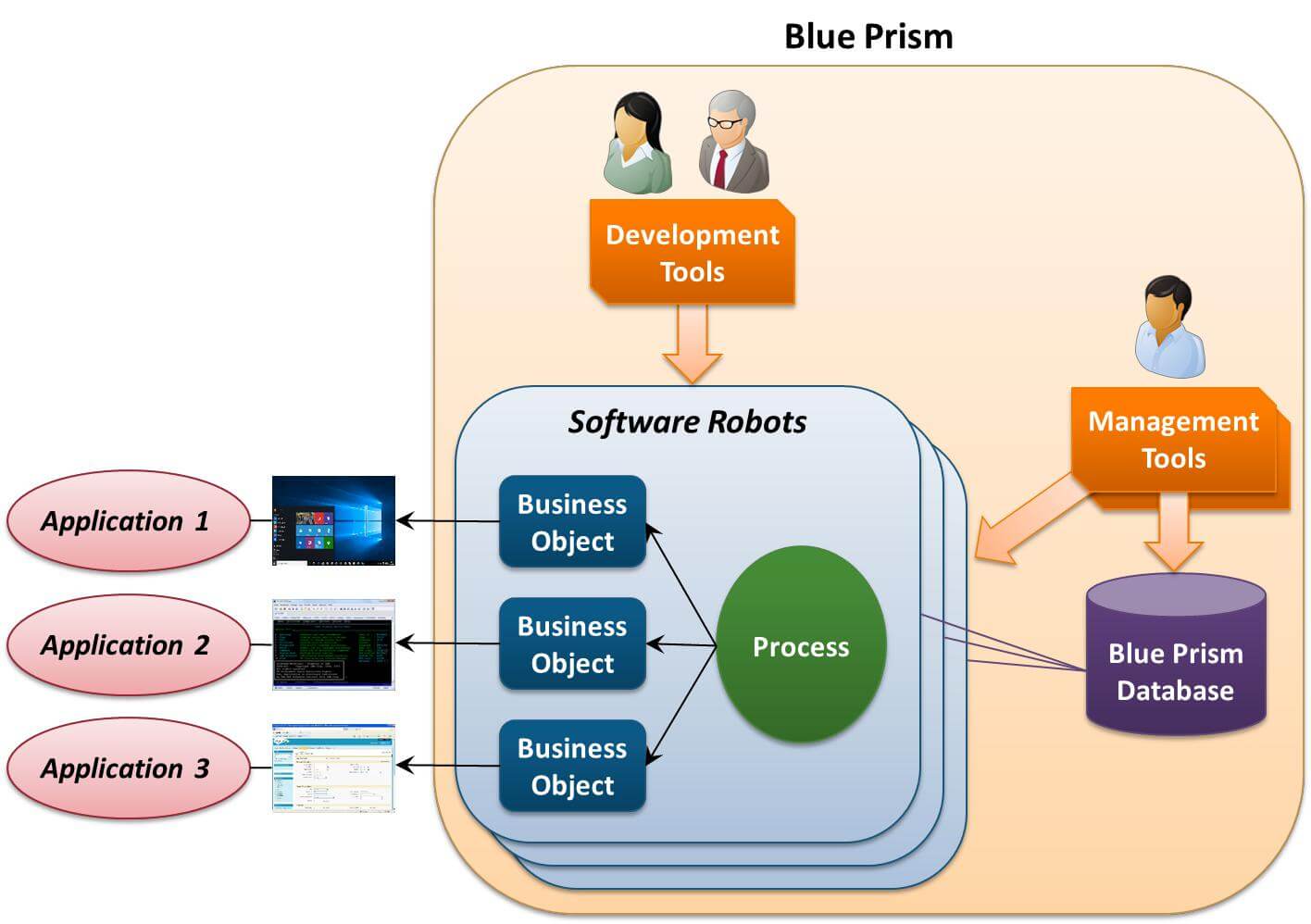
Figure 2: Blue Prism – business predictors and developers create software robots using business objects and processes, then manage those robots.
Every product robot has two principle parts: at least one business protests that connect with the UIs of the applications this robot utilizes, and a process containing the rationale that drives the robot.
Blue Prism has worked in help for associating business articles to different sorts of use UIs, including program based HTML interfaces, Windows interfaces, centralized server applications got to by means of terminals, and interfaces constructed utilizing Java. Every business object actualizes a specific arrangement of activities against an application’s UI. For instance, a solitary business article may be equipped for signing in to an application, entering a client name into a specific screen, recovering an outcome, at that point logging off.
A designer or business investigator utilizes a Blue Prism advancement device called Object Studio to make these items graphically—composing code isn’t required. The maker of this robot likewise utilizes another Blue Prism advancement apparatus, Process Studio, to graphically characterize the means in the robot’s process. Each progression in a process conjures activities in business articles to connect with an application, and by and by, composing code isn’t required. Undeniably, a process demonstrations like a human client getting to every application to complete the business process.
To store business articles, processes, and other data, the item gives the SQL Server-based Blue Prism database. IT and representatives can utilize Blue Prism’s administration apparatuses to plan when robots run, see data about running robots, and that’s just the beginning. These devices additionally permit arranging clients, seeing review logs, and performing other administration errands. Furthermore, to make life more straightforward for the general population utilizing the item, all of Blue Prism’s customer instruments are given as tabs in a solitary application called the Interactive Client (IC).
The Blue Prism innovation is expected to be utilized by IT individuals and specialists cooperating. IT must be involved initially to set things up and assemble organizations. Without this, robots can’t keep running in an flexible, hard, also, secure way. When this is done, agents can make and alter computerized processes to a great extent without anyone else. This methodology, including both IT and business, gives an association a chance to make sure that its product robots meet consistence and administrative prerequisites while as yet giving the robots a chance to be constructed and refreshed rapidly. To recognize it from less difficult content based innovations, this style of process automation is here and there called venture RPA.
Robotizing business processes through RPA isn’t difficult to get it. All things considered, to perceive how these pieces cooperate, it’s valuable to stroll through a commonplace situation. The following area does this, indicating how the different parts of Blue Prism are utilized.
A Blue Prism Scenario
Envision a straightforward business process did by a call focus laborer to decide a client’s transportation cost and submit a request. This process requires the specialist to collaborate with three distinct applications, entering data into everyone and receiving data consequently. Figure 3 indicates what this looks like.
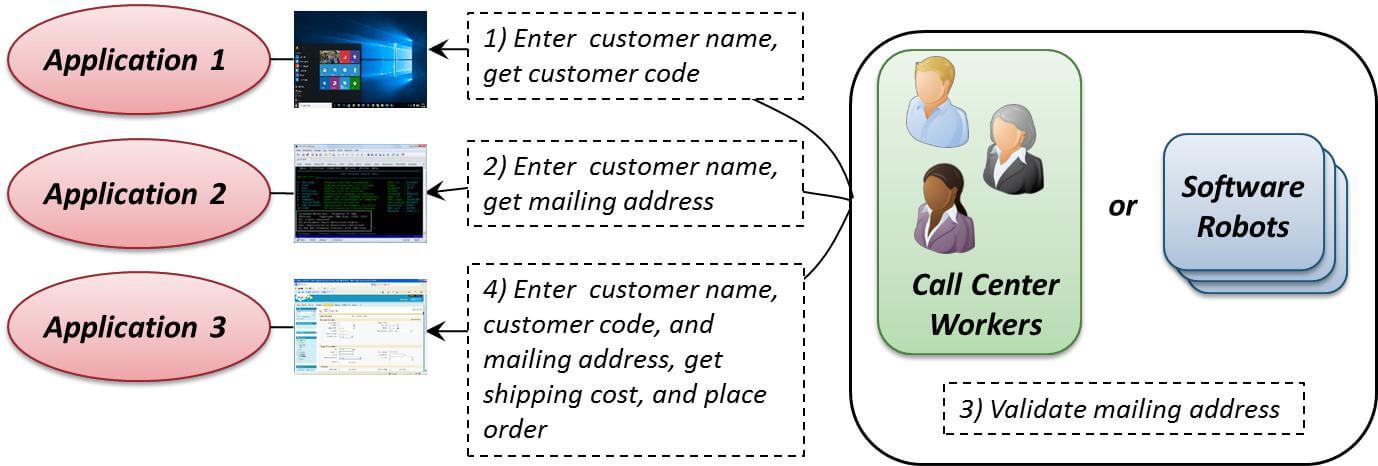
Figure 3: In this example process, call middle workers or software robots cooperate with three changed applications to place an order.
As the figure appears, the process initially requires the laborer to enter the client’s name into a Windows application, at that point get back a code demonstrating how much business the firm gets from this client (stage 1). The process next requires the specialist to enter the client’s name into a centralized computer application, recovering the client’s street number (stage 2). Next, the process requires the laborer to approve this location, ensuring that it contains every single required field (stage 3). At last, the laborer enters the majority of this—the client name, code, and postage information—into a Web-based application that decides the transportation cost and submits the client’s request (stage 4).
To robotize this process with Blue Prism, an engineer or business expert uses Object Studio to make a business object for every one of the three applications. Every business object executes similar activities that a call fixate specialist performs on this application. For instance, the business object that connects with the Windows application may contain a login activity, an activity that enters the client’s name, another activity that recovers the client code, and a logout activity.
When these items have been made, a designer or business expert uses Process Studio to graphically characterize the means in the process. Each progression can summon activities in at least one business object. In this precedent, the process has four fundamental parts: entering information into the Windows application and getting an outcome, entering information into the centralized computer application and understanding that outcome, approving the postage information (which should be possible by a business item), and entering the majority of this information into the Web-based application.
When the business objects and the process have been made, the robot can be executed. (Note that with Blue Prism, robots keep running on servers in the association’s data center instead of on client work areas.) An IT or representative can utilize Blue Prism’s administration instrument to plan when robots run, at that point screen their execution. What’s more, to help make applications securely, Blue Prism characterizes an approach for planning, fabricating, and conveying another mechanized process. This approach incorporates run of the mill programming advancement practices, for example, utilizing particular conditions for improvement and creation, with a business close down to move another robot into generation.
On the off chance that the business process needs to change, a business expert or engineer utilizes Process Studio to alter it. In the event that the UI to one of the applications changes essentially, or if supporting the changed business process requires executing another activity on one of the applications, the expert or engineer utilizes Object Studio to change the application’s business object as required.
The primary concern to comprehend is that a robot manufactured utilizing items and processes can execute indistinguishable strides from an individual. This incorporates the communications with applications, as well as steps the individual may perform physically, for example, approving the location. This is the thing that makes it workable for Blue Prism robots to replace individuals in mechanizing a business process.
Why Not Use a Record Button?
On the off chance that all you need to do is imitate a client’s cooperations with applications, why try making business items and processes? Why not give a straightforward Record catch that gives you a chance to record a precedent client’s conduct in content, at that point run that content again and again? Making a content can be quick and simple, and some automation items do this.
Blue Prism isn’t one of them, be that as it may, for a few reasons. For a certain something, making a content keep running in a dependable, adaptable, secure design can be testing. Contents are usually intended to be controlled by a client on a work area machine, while versatile programming robots must run unattended on servers. Blue’s Prism will probably make an oversaw workforce of robots, not to enable people to run contents individually.
Likewise, when a library of Blue Prism business objects exists, those items can be reused over various processes. What’s more, in light of the fact that just business objects talk straightforwardly to applications, changes in application client interfaces commonly don’t require changes in processes; at most, just the influenced business object needs to be refreshed. This is generally easier than working out which contents must change, at that point refreshing each one. Scripting with a record catch can be straightforward. Be that as it may, it’s not the best methodology for big business RPA.
The Technology of Blue Prism
Having a major picture perception of how Blue Prism purposes is a decent place to begin. However sympathetic the item requires more. This area investigates the Blue Prism innovation, depicting every one of its fundamental segments.
Making Blue Prism Applications
Business Objects
As simply portrayed, a Blue Prism robot be contingent on corporate articles to associate with applications. Understanding what a business object is first required understanding the segments every one contains, at that point perceiving how the Blue Prism improvement instruments are utilized to make those segments. This segment takes a gander at both.
What is a Business Object?
A business object goes about as a connector to the UI of an explicit application. To achieve this, each item has two primary parts:
An application show that uncovered the components of this current application’s UI.
At least one activities, every one of which actualizes all or part of a task that the business article can perform.
Figure 4 indicates how these two sections identify with one other and to the world outside the business object.
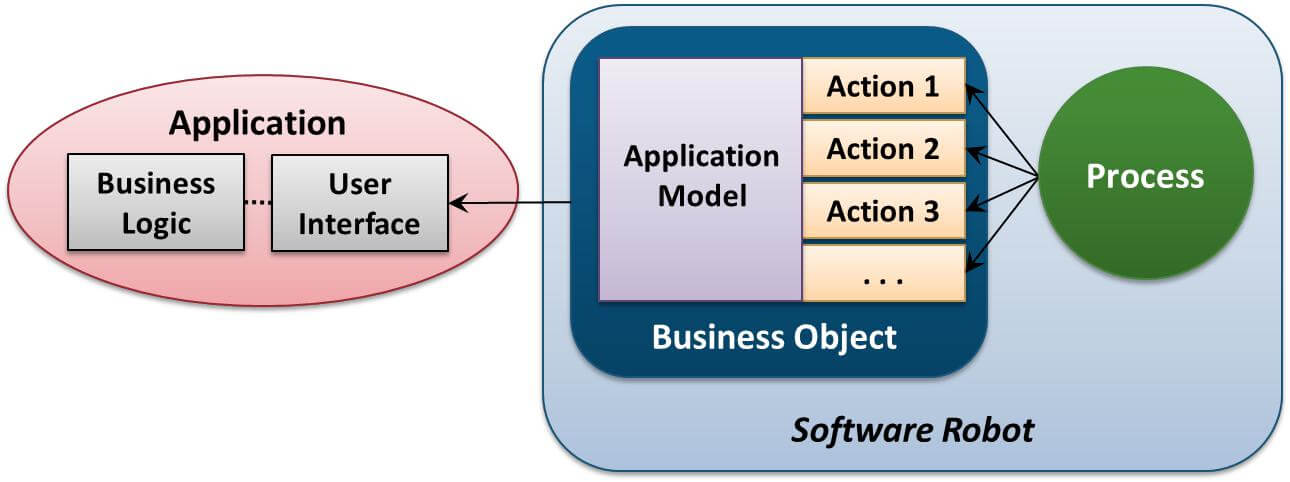
Figure 4: A corporate object includes a request model that interrelates with a particular application’s user interface, together with actions that implement operations on that application.
Understanding business objects require taking a gander at both of these parts. What finishes strolls every one.
Making an Application Model
To associate with an application, a robot has to think about that application’s UI. An application show speaks to this information, depicting how the business object interfaces with the application. Since application interfaces utilize an assortment of innovations, Blue Prism gives standard libraries that help different methodologies, called modes, for doing this. The alternatives include:
An HTML mode, which permits working with HTML, JavaScript, and other basic segments of a program interface.
A Windows mode, enabling access to Windows applications assembled utilizing the .NET Framework, the Microsoft Foundation Class (MFC) library, Visual Basic 6, PowerBuilder, and different Windows-based UI innovations.
A Java model for working with UIs made utilizing Swing, Java applets, Oracle Forms, and different advancements dependent on the Java Virtual Machine.
A centralized server mode, which enables access to centralized server applications through terminal emulators from different merchants, including Attachmate, Micro Focus, IBM, and others.
A Citrix mode, enabling access to applications that give their UIs through advances, for example, Citrix XenApp and Microsoft Remote Desktop Services.
To choose a specific mode for a recently made business object, a designer or business expert uses a wizard that is a piece of Object Studio. It’s likewise conceivable to utilize more than one mode in a solitary business object. On the off chance that an HTML page contains a Java applet, for instance, both the HTML mode and the Java mode can be utilized.
Whatever modes a business object utilizes, Blue Prism models each screen in an application’s UI as a lot of components. Every component speaks to some part of what’s on this screen. For instance, the components in a screen got to through the HTML interface may incorporate a field for entering information, a catch to click, and a hyperlink. The application display characterizes the components of each screen for a specific application, at that point makes them accessible to the activities around here article. Similarly, as a conventional API can uncover an application’s business rationale to other code, an application demonstrate uncovered an application’s UI to the rationale contained in activities.
To make application models, a business investigator or a designer utilizes the Application Modeler, some portion of Object Studio. The screenshot in Figure 5 gives a feeling of how this apparatus is utilized.
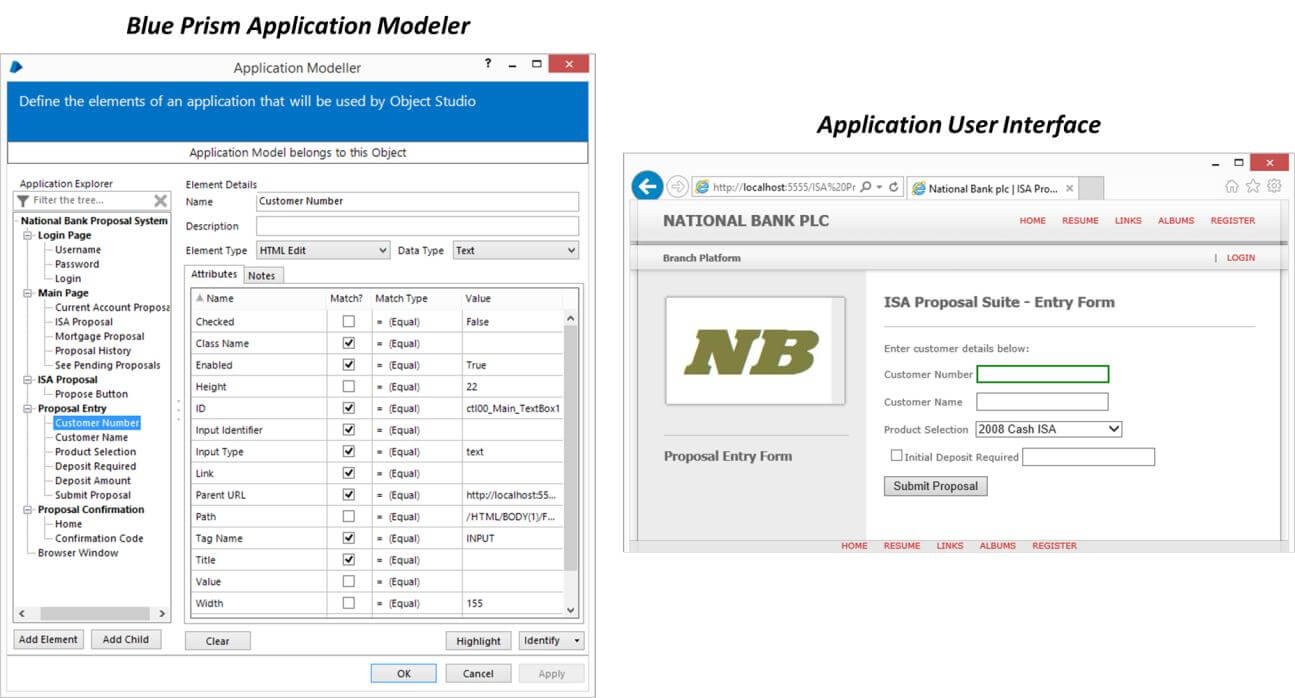
Figure 5: The Application Modeler in Object Studio assistances its user make an application model.
To make an application display, a business investigator or engineer must figure out which screens in an application’s UI this business item will utilize. When she’s set this, she at that point utilizes the Application Modeler to venture through each screen, tapping on the components that ought to be made accessible to the business item’s activities. In Figure 5, for instance, which is for an HTML interface, the Application Explorer sheet in the Application Modeler window on the left contains a rundown of screens and components for the application appeared on the right. As this sheet shows, the Login screen contains components, for example, fields for Username and Password, together with a catch for Login. Essentially, the Proposal Entry screen has components, for example, Customer Number, Customer Name, and Product Selection. This model of the application’s UI was made by venturing through those screens with the Application Modeler.
The window on the privilege in Figure 5 demonstrates the real UI for the application’s Proposal Entry screen. Notice that the Customer Number component is featured. Doing this makes the Application Modeler raise data about that component, for example, its sort and properties. By checking at least one boxes in the Match segment, the engineer shows which of these characteristics the application model should use to recognize this component at runtime. Since Blue Prism utilizes ascribes to distinguish components, the application model can now and then stay unaltered regardless of whether parts of the application’s UI are changed. For instance, the ID quality of an HTML component continues as before regardless of whether a site page’s format changes, so an application model may have the capacity to deal with this change without adjustment.
When the application show is finished, the required components of each screen in this application are currently accessible to be utilized. Those components are gotten to by activities, thus the following thing to take a gander at is the thing that activities are and how they’re made.
Creating Actions
As their name suggests, actions device the logic of a corporate object. As Figure 6 shows, each exploit contains a set of stages along with data items land information used by that action.
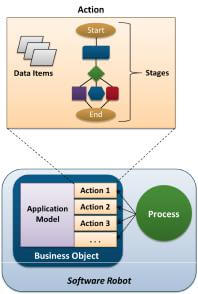
Figure 6: Each action in a business object can contain steps and data items.
An activity can be distributed, which gives it a chance to be called by processes and possibly another programming. An activity can likewise stay private, making it accessible just too different activities around here item. Whichever choice is picked, the activity starts with a Start stage and completes with an End arrange, as Figure 6 appears. In the middle of seeming whatever stages are required to complete the assignments this activity performs. The absolute most regularly utilized stages in business objects incorporate the accompanying:
Peruse: gets information from a UI component and stores it in an information thing.
Compose: puts information from an information thing to a UI component.
Explore: opens menus clicks catches and completes different assignments required to explore through an application’s screens.
Pause: stops execution until the point that a condition is met in the application. For instance, a business item may need to hold up until the point when a specific window has shown up before continuing or trust that the whole application will get done with stacking.
Connection: makes a connection between stages in an activity.
Selection: works as an If statement that extends the action monitoring action, depending on the evaluation of at least one information.
Decision: acts as a statement of change, selecting one of the few changes in the flow of control, which depends on the evaluation of at least one information.
Calculation: contains a joint that reproduces the evaluation of information objects, for example, that includes two numbers, the subtraction of a subset or the change of a date that begins with one configuration, then the next.
Circle: repeats through a gathering of information.
Code: contains subjective code written in dialects, for example, C# and Visual Basic. This may be utilized to do complex information control, for instance, or to get to an application-explicit interface, for example, a COM object in a Windows interface. Code stages can equally be utilized to get to database borders, giving a page guide access to application information.
Special case: brings an exemption up in the execution of an activity.
Recuperation: starts a square to deal with singular cases.
Resume: closes a square to deal with unusual cases.
Caution: sends a notice to at least one endorsers by means of email showing that something has happened. A business item may send an alarm to whatever point a special case is raised, for instance.
Making an activity—consolidating a lot of stages—resembles making a technique or subroutine. Instead of utilization code, in any case, the individual making this activity does it graphically utilizing Object Studio. He can likewise characterize properties for each stage, for example, a name. As referenced before, the objective is to enable business experts to characterize this rationale, not simply engineers. Figure 7 demonstrates a basic case of making a login page utilizing Object Studio.
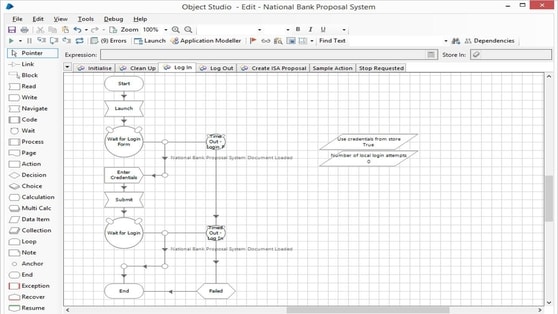
Figure 7: Business analyst/developer uses Object Studio to define the stages in an action.
As the figure appears, each activity around here item shows up as a tab in the Object Studio configuration surface.
Here, the investigator has chosen the Log In the activity, thus the apparatus demonstrates the information things and stages in this activity. The information things, appeared on the right, incorporate a Boolean demonstrating that this activity should utilize login qualifications contained in the Blue Prism database and a counter to monitor what number of login endeavors this activity makes.
The activity has a Start and End arrange, with the stages required to play out the login in the middle. Following the Start organize shows up a Navigate arrange named “Dispatch” that begins the application this business object works with. The Wait organizes, appeared as a hover, hangs tight for the login screen to stack, with a period out-based mistake handler in the event that something turns out badly. Next comes a Write arrange, named “Enter Credentials”, that enters the client name and secret key. Another Navigate organize shows up straight away, this time named “Present”, that taps the screen’s Login catch. The activity at that point executes another Wait organize, hanging tight for a screen that demonstrates whether the login has succeeded or fizzled. On the off chance that it falls flat, a blunder handler is executed. On the off chance that it succeeds, the activity closes typically—the login was a triumph.
When business objects are made, they can be gotten to straightforwardly by processes, as depicted in the following segment. They can likewise be gotten to by another programming, be that as it may. Every business article can uncover a WSDL interface, with its activities conjured by means of SOAP. This can be valuable for an association seeking after an SOA methodology, for instance, or in different circumstances.
The manner in which business objects work makes fundamental testing direct. An expert making activity can open an Object Studio window for the business object he’s making and another window for the application this business
object neutralizes. When he taps on a phase in the business object, the consequence of that organize, for example, composing an incentive into a field, shows up promptly in the application’s UI screen. This permits approving the essential usefulness of stages without hanging tight for recompilation. Article Studio additionally contains an inherent debugger, permitting things, for example, venturing through an activity’s rationale one phase at any given moment, setting breakpoints, and analyzing the substance of information things.
Processes
The reason for a Blue Prism application is to mechanize all or part of a business process. To permit this, Blue Prism gives Process Studio, an instrument for making processes. Prior to seeing this apparatus, be that as it may, we have to look all the more carefully at Blue Prism processes.
What is a Process?
Since Blue Prism gets to applications through their UIs, a process demonstrations much like a human client—it executes a product robot’s rationale. Furthermore, similarly, as an individual may communicate with a few applications to do a progression of steps, a process can summon activities in a few business items to do those equivalent advances.
Here and there, a process is like a business object. Each process is characterized utilizing at least one pages, every one of which is like a business object activity, and each page contains some number of stages and information things. There are essential contrasts between business object activities and process pages, notwithstanding. For instance, in a business object, any distributed activity can be called whenever; the article uncovered a lot of activities that can be summoned in any request. A process, be that as it may, dependable starts at its Main page, and the pages it contains dependably execute in a characterized request. (This shouldn’t astound—it’s executing a business process, not a lot of autonomous activities.) Figure 8 outlines this thought.
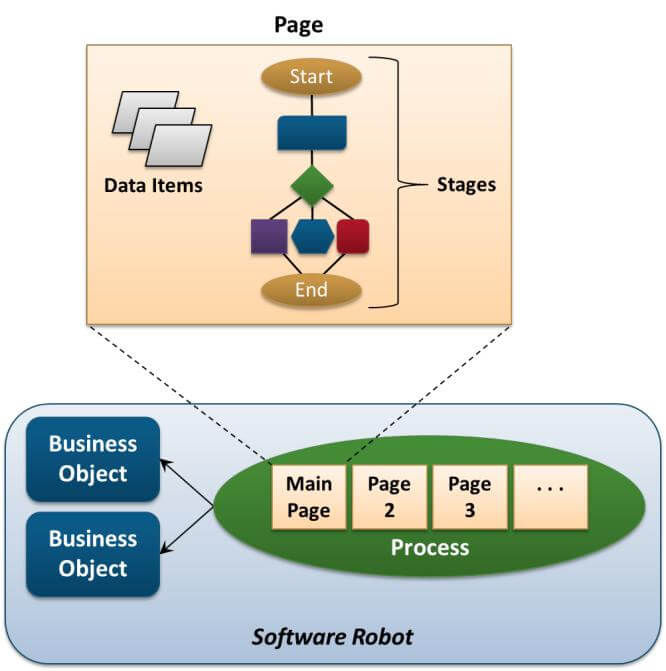
Figure 8: process contains one or extra pages and always begins execution at its main page.
As the figure proposes, execution of a process dependably starts with the Start phase of its Main page. A straightforward process may be characterized altogether in this Main page, however almost certain, the process will be spread over a few pages. For instance, a gathering of stages that are utilized habitually may be characterized without anyone else page, giving them a chance to be summoned much like a subroutine. All through its execution arranges in the process summon activities in business protests as required.
The stages permitted in a process are comparable, yet not indistinguishable, to those utilized in a business object. The control stream stages, for example, Link, Decision, Choice, and Loop are for the most part accessible, just like the Calculation organize. Correspondingly, the phases for raising and dealing with special cases—Exception, Recovery, and Resume—are accessible.
A few phases are increasingly explicit to processes, be that as it may. The most essential of these is Action, which permits calling a distributed activity in a business object. This stage can likewise summon a SOAP-based administration or call a COM object specifically. In the event that important, a process can likewise call another process through the Process arrange.
Similarly, as a few phases seem just in processes, some business object stages aren’t permitted in processes. A process can’t contain Read, Write, or Navigate, for instance, since these are planned for working straightforwardly with an application’s UI. Processes depend on business articles to do this—they don’t do it without anyone’s help. A process additionally can’t contain Code stages, which implies that low-level customizations are consigned to business objects.
As Figure 8 appears, a page in a process can contain information things. One approach to utilize these is to hold parameter esteems that are passed into a process when it’s begun. For instance, a specific process occurrence may be allocated 100 records to work with, with that number go in as a parameter.
This brings up a progressively broad issue: How do processes get the info they have to work? Assume a process must work its way through a rundown of client accounts, for instance, utilizing the correct data for every client. Where does this data originate from? One choice is to pass it in as parameters when a process occasion is begun. Another is to utilize a Blue Prism work line, which can be perused by numerous process cases (and are depicted in more detail later). It’s additionally feasible for processes to get their contribution from outer programming, for example, a current client work process framework.
Making a Process
To make a process, a business expert or designer utilizes Process Studio. Similarly, as processes are like business objects, Process Studio is like Object Studio, as Figure 9 appears.
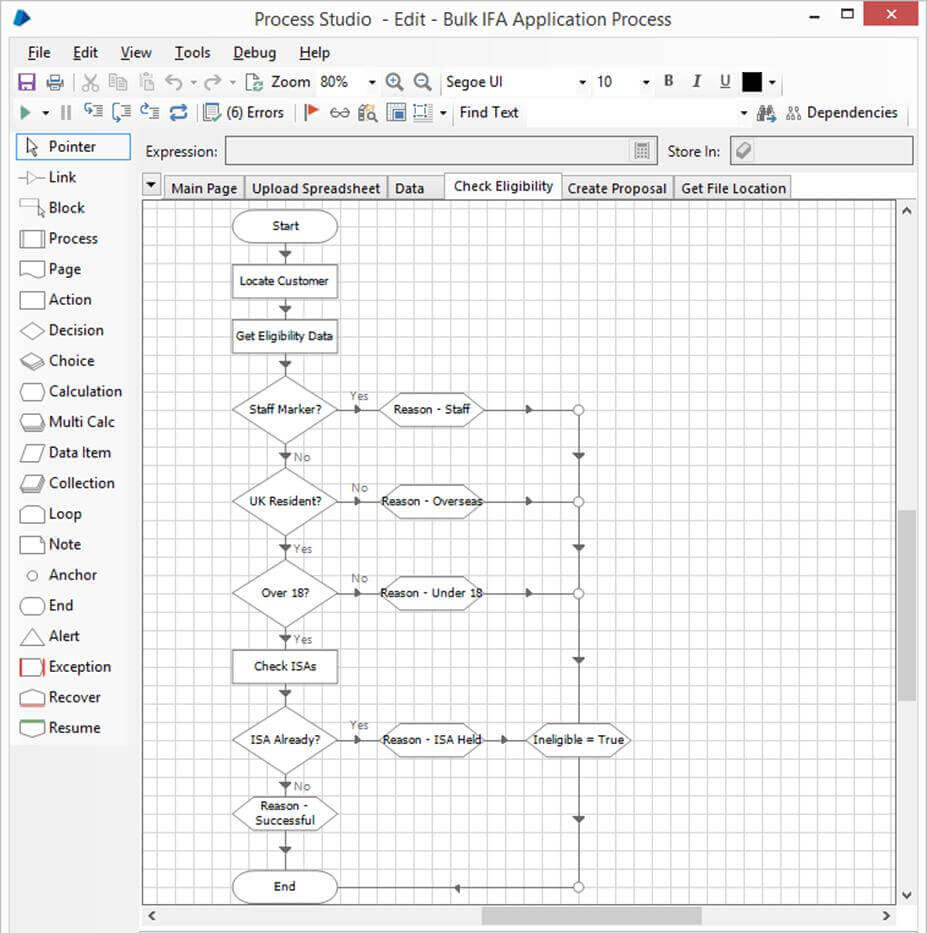
Figure 9: Using Process Studio, a corporate analyst or developer can arrange steps to define the logic of a process.
A process characterized in Process Studio looks much like a conventional flowchart. As in Object Studio, each page in a process has its very own tab, giving the investigator a chance to separate the process into sensible groupings.
Additionally like Object Studio, Process Studio enables its client to make rationale graphically by gathering stages on a structured surface. The device incorporates an inherent debugger that permits venturing through a process, setting breakpoints, looking at information things, and the sky is the limit from there.
One of the difficulties in working with business processes is transforming them securely. To help with this, Process Studio monitors the past form of a process being altered. The client of the device is then ready to change to a view that demonstrates both the old and new forms one next to the other, letting her see precisely what’s extraordinary. Blue Prism likewise gives a process history device that enables following modifications to processes after some time.
Another test in working with business processes is monitoring what really happens when they execute. For instance, think about a process that takes diverse ways depending on whether, state, a lodging is accessible. Utilizing Process Studio, an expert can get a continuous showcase of what level of solicitations take the achievement way and of what number of fizzle for a specific sort of process. Data about the number and sort of special cases a process produces is likewise available. This quick input can be useful in making a mechanized business process run all the more viable.
Sending Blue Prism Applications
A process demonstrations like a human client who considers and types quick. Today, every human client commonly has his own work area Windows machine. For a process to supplant that client, each process should likewise have its own Windows work area. Luckily, this doesn’t infer that utilizing Blue Prism requires a room loaded with devoted PCs. Rather, each process case regularly keeps running in its very own Windows virtual machine (VM).
For instance, review the situation portrayed before in which a business process required getting to a Windows application, an IBM centralized computer, and a Web application. The product robot used to robotize this business process—a Blue Prism process and the three business objects it utilizes—keeps running inside its very own VM. To every one of the applications, this robot will look like simply one more client. Figure 10 demonstrates what this looks like.

Figure 10: Each example of a robot usually executes inside its own VM
Undertaking business applications typically have numerous concurrent clients. To achieve this with Blue Prism implies sending numerous VMs, each running an example of a robot. A solitary physical server will ordinarily run some of these VMs, as Figure 11 delineates.
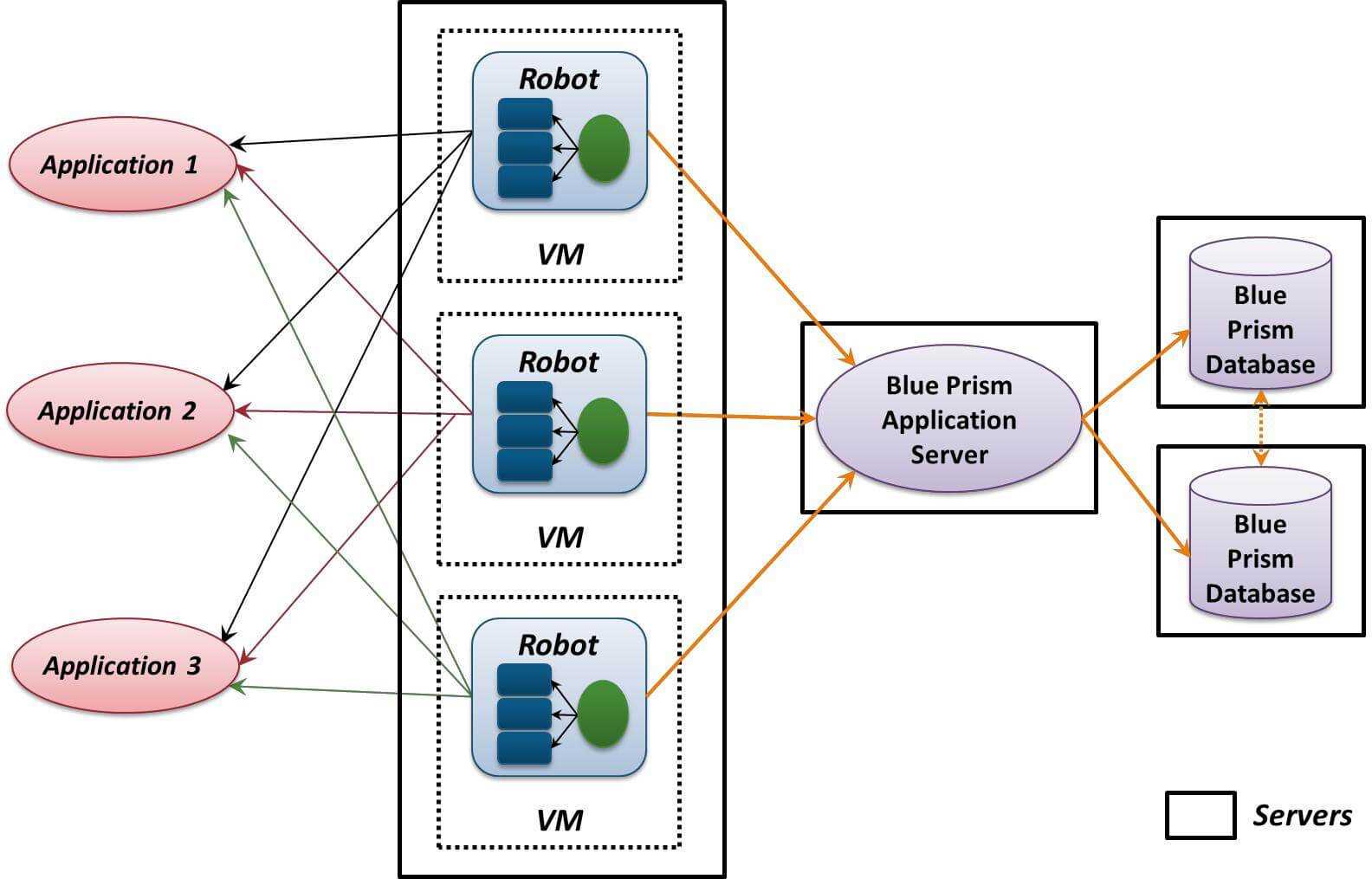
Figure 11: Multiple VMs, each successively an only Blue Prism robot and division a Blue Prism database, can run on a single physical machine
As the figure appears, a Blue Prism application server goes about like a typical control point for these robots. Every one of them additionally shares a Blue Prism database. This database gives a common vault to the earth, putting away the code for every robot, the work lines those robots use, review logs, and that’s only the tip of the iceberg. It’s executed utilizing SQL Server with Always On Availability Groups, giving a repetitive, solid store for this venture RPA condition.
Work lines regularly assume a critical job in Blue Prism conditions. Things to be processed, for example, client orders, can be put into a line, at that point processed at the same time by a wide range of robots. Every robot executes a similar Blue Prism process, yet chips away at various information, e.g., the client arrange it’s pulled from a work line. This influences scaling to up or down basic; the individual controlling the robotic workforce can simply increment or decline the number of robots that read from a specific work line. It likewise helps keep robots occupie, since everyone can work at its very own pace, pulling another thing from the line at whatever point it’s prepared.
Overseeing Blue Prism Applications
Much the same as manual processes, robotized processes—programming robots—should be controlled and oversaw. To permit this, Blue Prism gives two apparatuses, both executed as tabs in the Interactive Client: Control and System.
The reason for the Control tab is to let business investigators and IT staff work with robots. The device gives them a chance to perform errands, for example,
Beginning and halting robot occurrences. (It’s likewise conceivable to do this from the order line or with outer programming—utilizing the Control tab isn’t required.)
Survey the Session Log delivered by every robot, either while the robot is pursuing or it’s finished.
This log can record when each phase in a process is executed, what information was utilized, and that’s just the beginning.
Making process plans. For instance, a business examiner may characterize a timetable that runs process X at 9 am each Friday morning. On the off chance that X finishes effectively, the timetable, runs process Y. On the off chance that X doesn’t finish effectively, the calendar runs process Z.
Review work lines, analyzing things, for example, how far robots have gotten in a specific line and what exemptions have happened.
While the Control tab permits working with running robots, the System tab centers around designing the Blue Prism condition. For instance, an overseer can utilize it to include another Blue Prism client, at that point characterize the jobs that client can work in. In view of these jobs, a client may be permitted to make new business items and processes or maybe simply run existing robots. The System tab can likewise be utilized to introduce and oversee robots and to complete an assortment of other administration capacities. Likewise, with the Control tab, the data the System tab uses to do the majority of this is put away in the Blue Prism database.
Blue Prism likewise gives the capacity to make and utilize dashboards. Every dashboard is an accumulation of tiles, and precisely which tiles show up on a dashboard is configurable. The sorts of data a dashboard can show can be gathered into three classifications:
Data that is helpful for controllers, the general population who are caring for a robotic workforce, for example, information about running robots and the work lines they’re utilizing.
Data went for the directors of those controllers, including totals of the more nitty gritty data utilized by controllers themselves.
Data planned for the entrepreneur of these robots, for example, following the level of work that is being dealt with by robots as opposed to individuals.
Distinctive individuals can make diverse dashboards, in view of their needs. Figure 12 demonstrates a basic model.
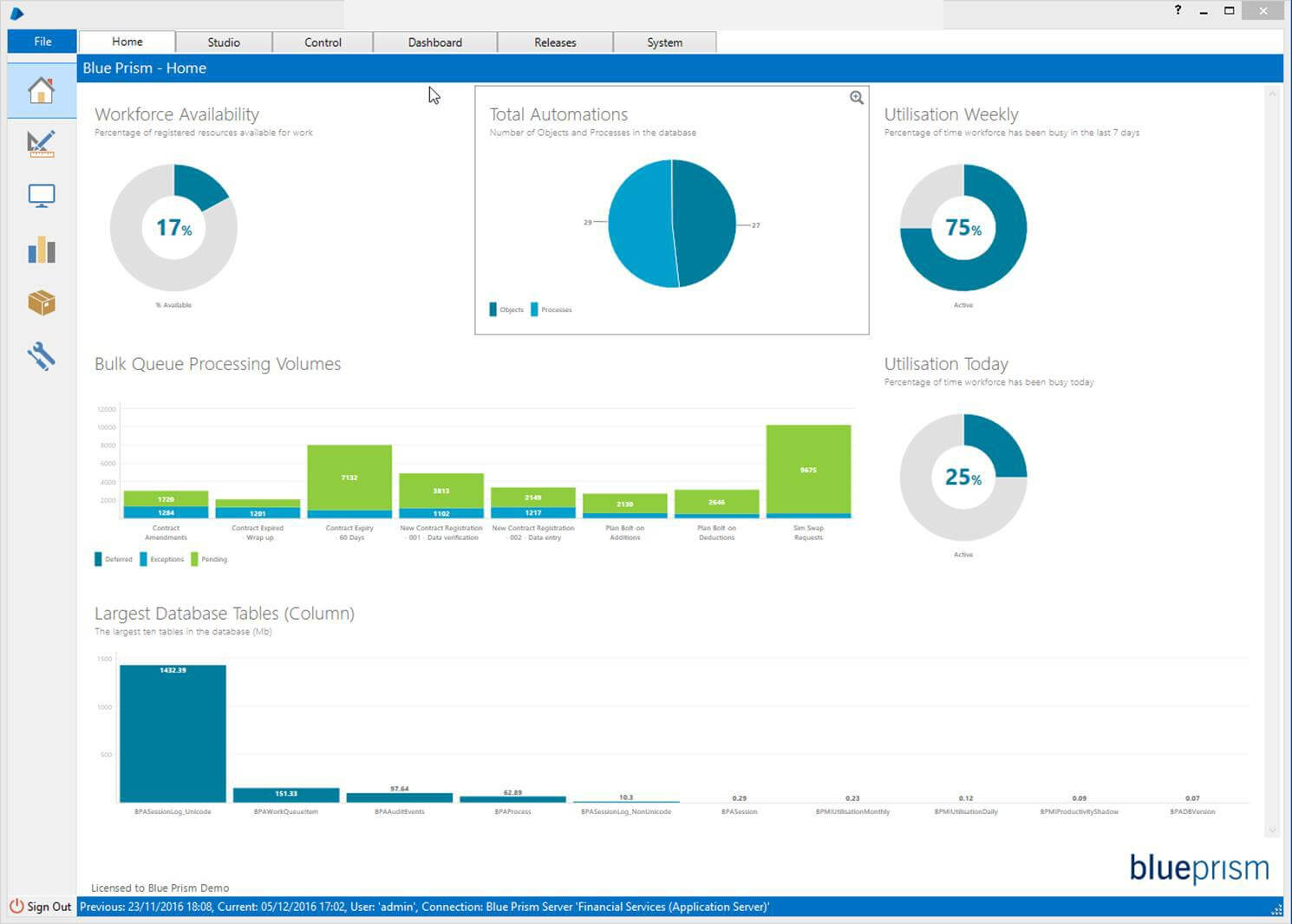
Figure 12: A Blue Prism dash provides a convenient way to display material about a robotic workforce.
This model incorporates a blend of these diverse data types, including robot usage, work line processing volumes, and insights regarding the Blue Prism database. The objective is to give diverse individuals simple access to the data they require.
Anchoring Blue Prism Applications
Any application planned for the big business organization should decisively address security, and Blue Prism is no exemption. One critical establishment for security in the item is job-based access control. When a Blue Prism manager has characterized what jobs a client can act in, the framework will enable that client to perform just the activities permitted by these jobs.
Blue Prism additionally monitors critical changes to its condition. Utilizing the System tab, a head can inspect records of things, for example, when a client sign into Blue Prism, when that client begins or erases a robot when that client changes her secret word, and the sky is the limit from there.
Another issue, particularly for an RPA innovation, is securely dealing with the client names and passwords used to sign in to applications. To do this, Blue Prism underpins Active Directory, which is the means by which most Blue Prism clients handle the character. The item likewise gives its own scrambled accreditations database, in any case, controlled by a Blue Prism manager, that can be utilized whenever wanted.
Ends Robotizing business processes with RPA can have significant business esteem. In circumstances where this automation must be done rapidly and easily, where changes are visited, or where businessmen must have the capacity to control the work themselves, depending on robotic process automation can be a decent arrangement.
Blue Prism is intended for these circumstances. The item’s essential objectives incorporate the accompanying:
Helping associations robotize business processes all the more rapidly and for less cash. An essential result of this is the capacity to apply process automation to bring down esteem situations that probably won’t be worth mechanizing utilizing increasingly customary methodologies.
Giving devices that let business examiners assume a noteworthy job in making and changing robotized processes. The plan is both to enable associations to do these things in less time and to diminish the requirement for IT contribution in the advancement process.
Supporting undertaking RPA, giving associations a chance to make a robotic workforce—running in data centers, not work areas—that is adaptable, sensible, and secure.
No innovation is appropriate for each circumstance, and robotic process automation is no special case. However connected to the correct issues, this methodology can be a decent decision, as Blue Prism appears. Why not let innovation do all that it can?
How to Install MYSQL Express 2008/12/14 & Blue Prism.msi
1.Install MYSQL Express 2008/2012/2014 and Blue Prism.msi
(Install SQL in Windows Authentication Mode)
2.Please Ensure SQL Server & SQL Server Browser are up & Running before proceeding further
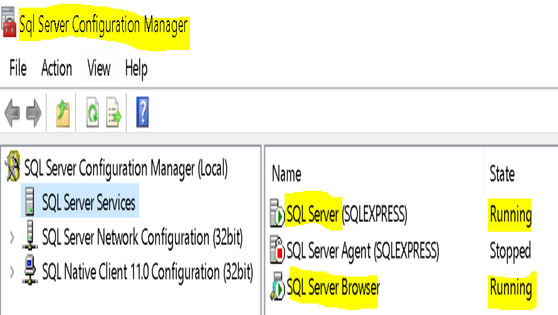
3.Make a note of SQL Instance Name

4.Open Blue Prism & let’s start Linking Blue Prism to MYSQL Database
5.Click on Configure button
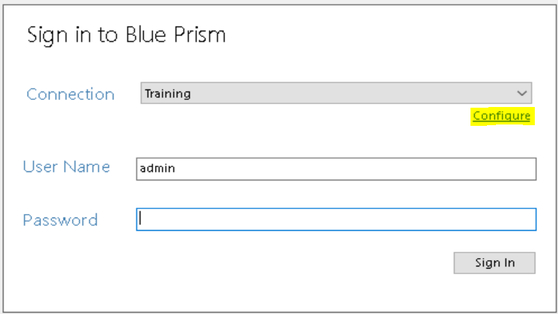
6.please Configure as per your need & Instance Name of MYSQL with localhost\ in front
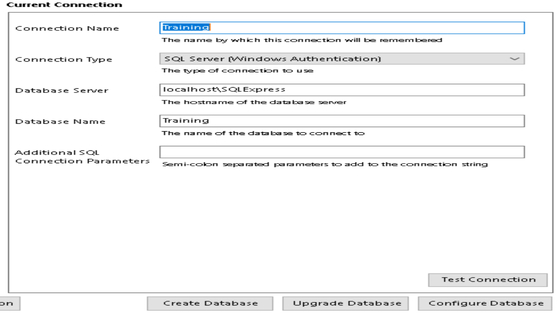
On clicking test connection you will be popped up with “the database doesn’t exist”.Then click create data base , ok & one more time ok for your data base to be created
Now refresh your blue Prism & enter “admin” as both username & password.
You will be prompted to provide new password & proceed. provide your license file to access all tabs
- Let’s Proceed Further with a Use case ”Extract data from excel sheet – process Excel data within an Application – Save the results back to Excel Sheet”
- Import Excel.VBO from the VBPO Folder in the Blue Prism installed location
- Now object would have been added to the Excel blue Prism
- Now Create a Process to make use of Excel Object to Read Excel Sheet
- Let’s try to create Excel Read Process as Reusable Process so that we can keep using the same all the time whenever Excel file is supposed to be read
- This is how the process to Read excel will look like
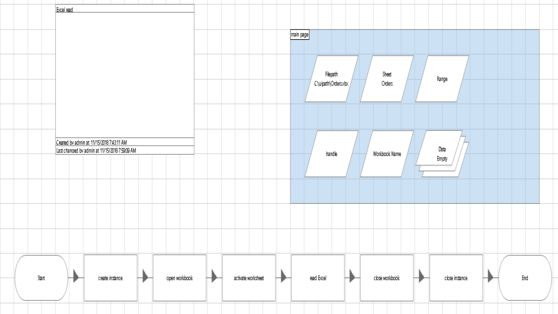
Whenever a excel file to be read just call this process using Process Block & provide “file path, sheet name and Range to be read As input & get the Collection as Output”
7.let’s start passing the output of one block as the input of upcoming blocks as per to need
8.Let’s create the object to the application which needs to be automated
9.Create a new Object & in the application modular give the details of application to be automated
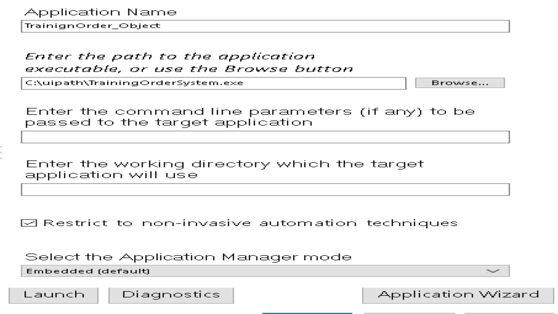
10.Start Spying all the elements with which interaction is going to be happened to automate the application using respective Spying mode
- Win32 Mode
- Accessibility Mode
- HTML Mode
- Regional Mode
11.Pick the right Combination of Constant Attributes for each element to make it more stable & This is the Application that is supposed to be automated
“bp” as staff number & “password” as password
Credential store in the system tab of blue prism can save the credentials encrypted & can be used
12.Try to Use Keyboard Short Cuts to make the process make much Faster as possible
Provide option 1 to add new order details & pass the data from excel to the application & get Order Reference number to be saved back to the Excel
To keep track of Status of Excel data Processed “Queue” in Blue prism is being used
Once all the data is Processed Just close application
Attached the .BP release file of the Process Explained for deep reference along with the document
Foundation Training
This is the Process Defined Document which defines the process to be automated for Foundation Course
1.Launch Application Training Order system.exe
2.Set Staff number as “bp” and Password as “password” & sign into the Application
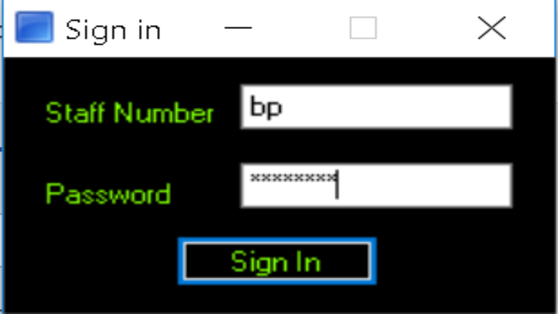
3.Options tab will be popped up waiting to get user input
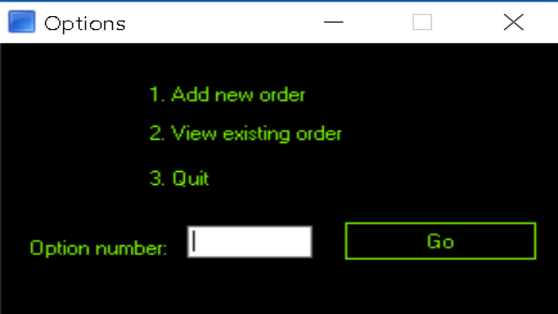
4.Option 1 is for adding new option
![]()
5.Option 2 is for getting details of pre-entered order
![]()
6.Option 3 will close the Trainingorderssystem.exe
![]()
7.Once option 1 is entered it will prompt for following details mentioned in the tab below
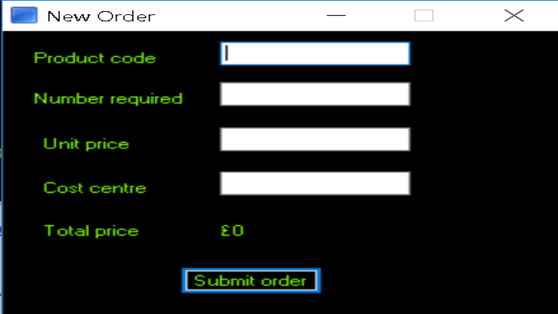
8.Please pick the order details from the excel sheet enter it into the application and submit
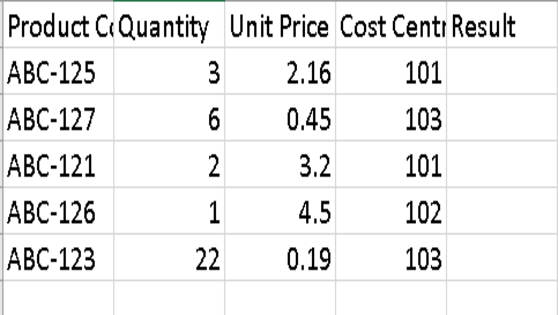
9.Once order details are submitted, it will return Order Reference number
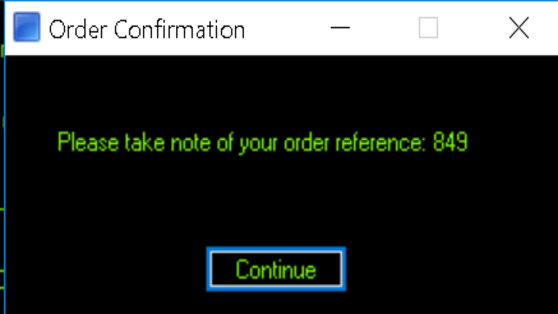
10.Order reference number obtained should be saved back to the Excel
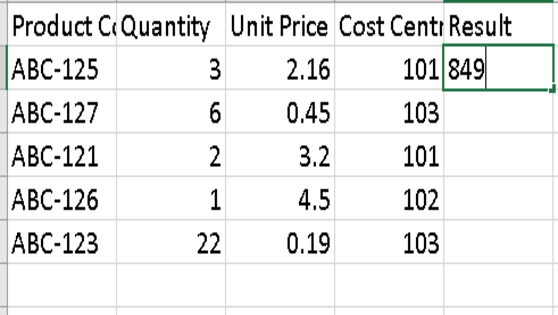
11.The Excel Sheet Should be Downloaded from Mail Attachment & should be sent back in Mail as attachment
Blue Prism Work
1.Create an object with application modular as this

2.Don’t Disturb the Initialize and clean up page of the object
![]()
3.Design Page for launch, Sign in, Add new Order, Order Confirmation, Close in application so that it can be called any page from any process or object as either action or page
![]()
4.Launch Page
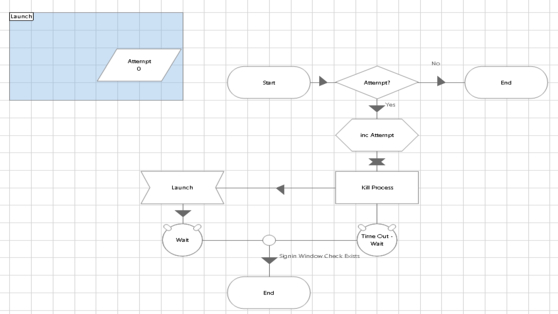
5.Sign in Page
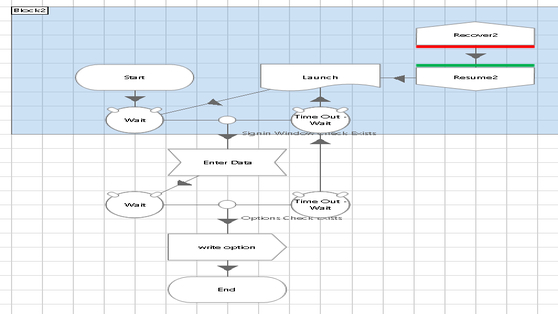
6.New Order page
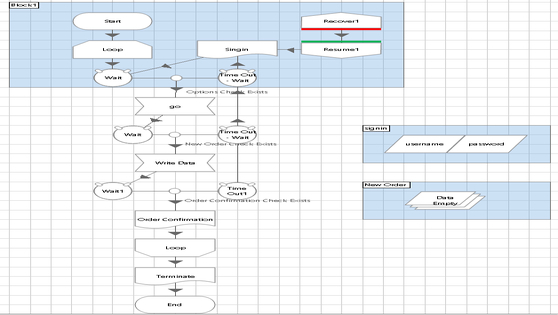
7.Order Confirmation Page
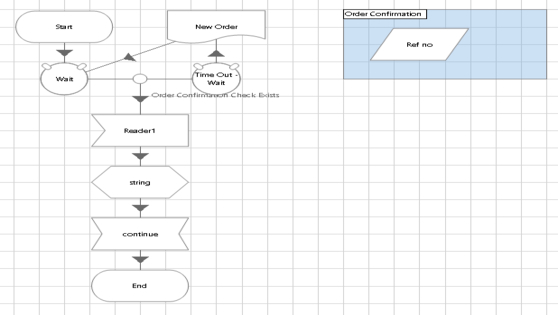
8.Terminate page
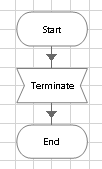
9.Excel Read Process with Excel VBO Imported
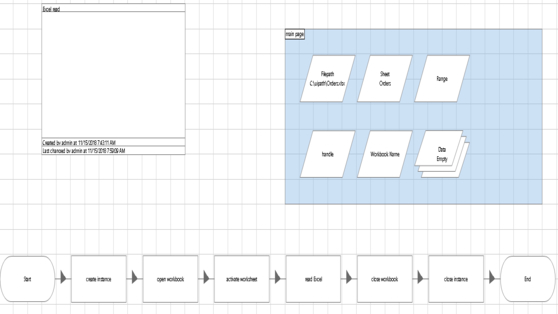
10.Call the Respective Processes & Actions to Automate the Process Defined
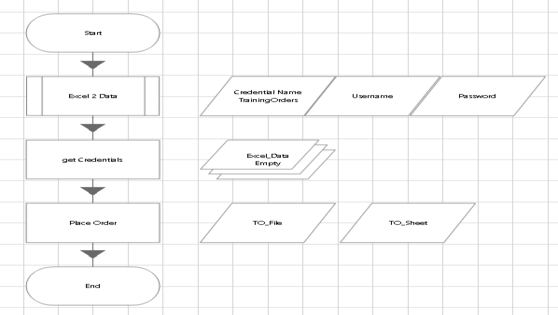

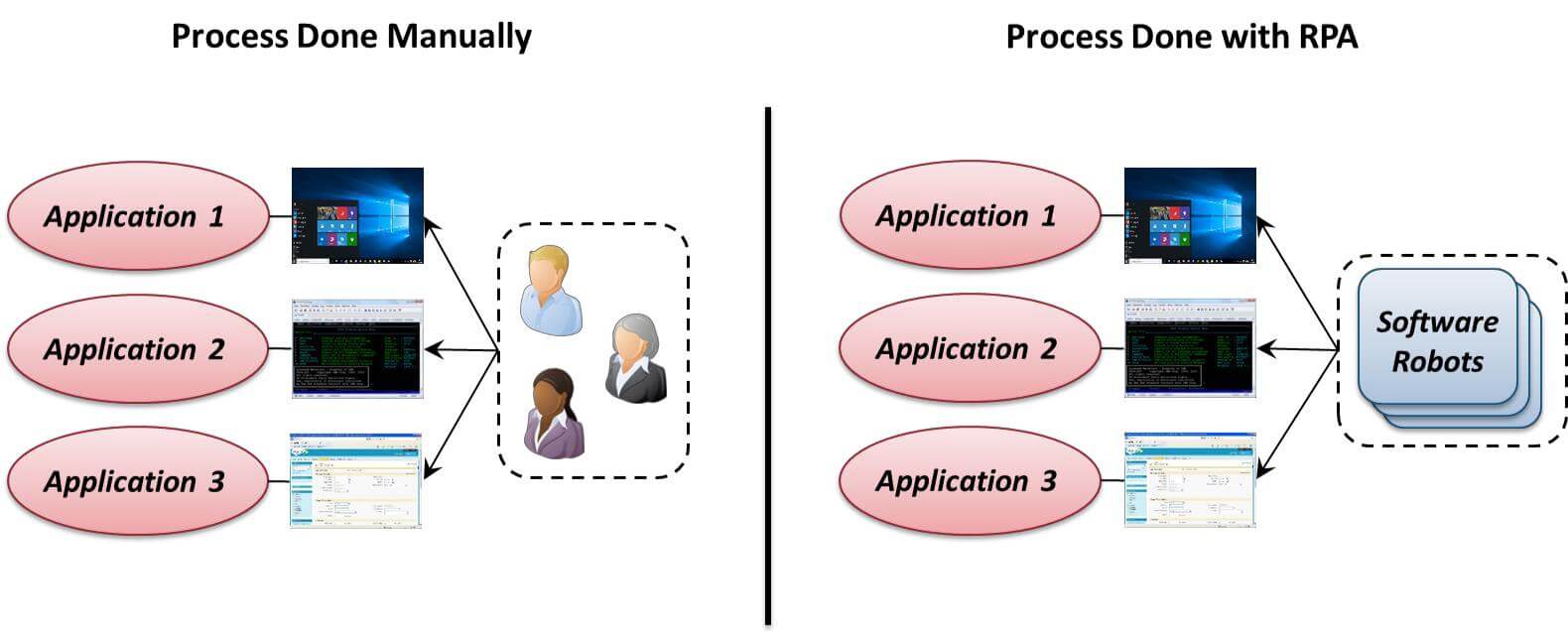

 +1 201-949-7520
+1 201-949-7520 +91-9707 240 250
+91-9707 240 250